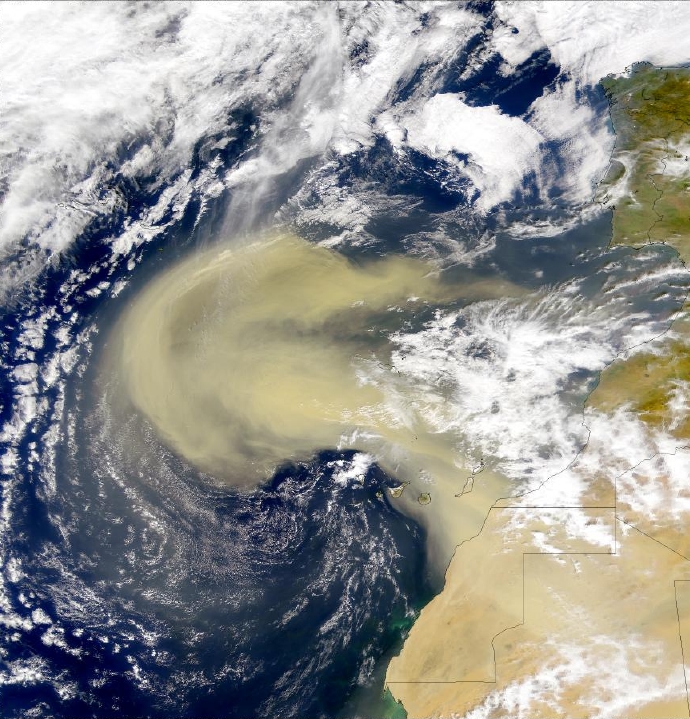Chapter 10
No Deserts before the Flood
The title of this chapter seems to be pretty bold. Were there really no deserts from the origin of life until the Flood? Correct. Let’s look at some evidence to lay a foundation, and then we’ll go to the Scriptures to confirm it. [A satellite image of sand being blown from the Sahara Desert into the Atlantic Ocean.]
The Sahara Desert is located in the northern portion of the continent of Africa. Winds blow the tan sand from the Sahara Desert into the Atlantic Ocean. Scientists observing the sand from the Sahara Desert blowing into the Atlantic Ocean got the bright idea to look into the soil of the ocean floor to determine if there was any evidence that would suggest when the Sahara Desert formed. How? The desert sand of the Sahara is different than tropical soil. The Sahara Desert sand has distinct reddish-tan granules. Tropical forest soil blown into the ocean has a distinct brownish-green color. Since the wind is blowing sand into the Atlantic Ocean and that sand has a particular color, then by viewing ocean core samples, scientists can detect the color changes to determine when the sand began being blown into the ocean and covering the prior brownish-green tropical deposits. Then they can discern how long the Sahara region has been a desert, essentially confirming when the Sahara was formed. Photo credit: Space, Science, and Engineering Center, Madison Wisconsin University.
When geologists viewed the core samples in their lab, they saw tan sand sediment with striations. Each horizontal striation indicated durations of time or years in the past. With deeper Atlantic floor samples, they saw a distinct color change from reddish-tan sand to darker brownish-green soil. This color change tells the story of when the Sahara region stopped blowing darker brownish-green colored soil into the Atlantic Ocean and began blowing light-colored reddish-tan sand into it. This shift in color is unmistakable and reveals the history of when the Sahara region stopped being a tropical forest and began being a desert.
Review: Atlantic ocean floor soil samples have revealed that the Sahara Desert blows reddish-tan sand into the ocean floor and that the desert was formed in the recent past. Beneath the desert sand, there is a layer of greenish-brown sediment that was deposited when the Sahara region was made up of tropical vegetation.
When Geologist Peter deMenocal of The Earth Institute at Columbia University studied the Atlantic core samples,1 he came up with a date of origin for the Sahara desert. What date did he discern?
To read the rest of the chapter, click here to get your copy of the book.
1news.columbia.edu/africaclimate.

